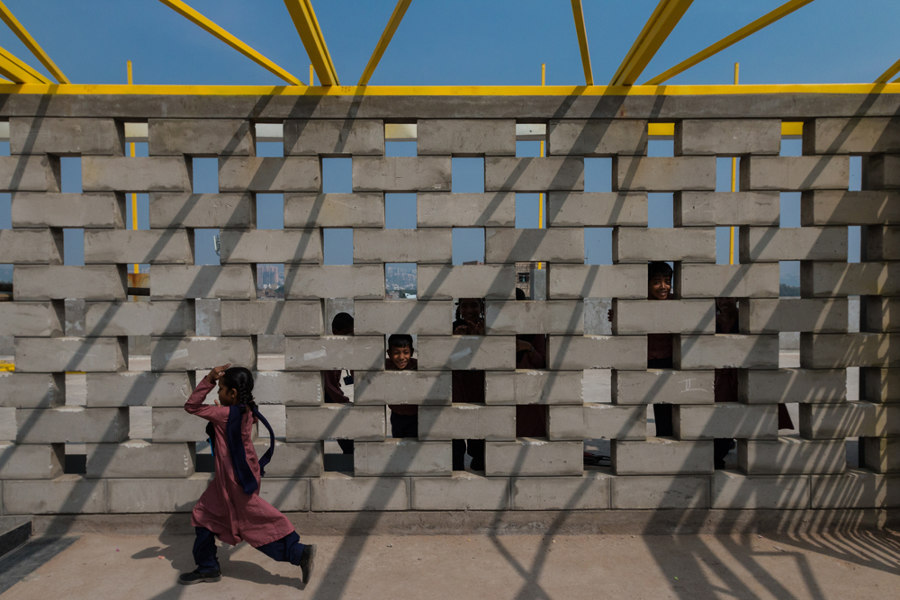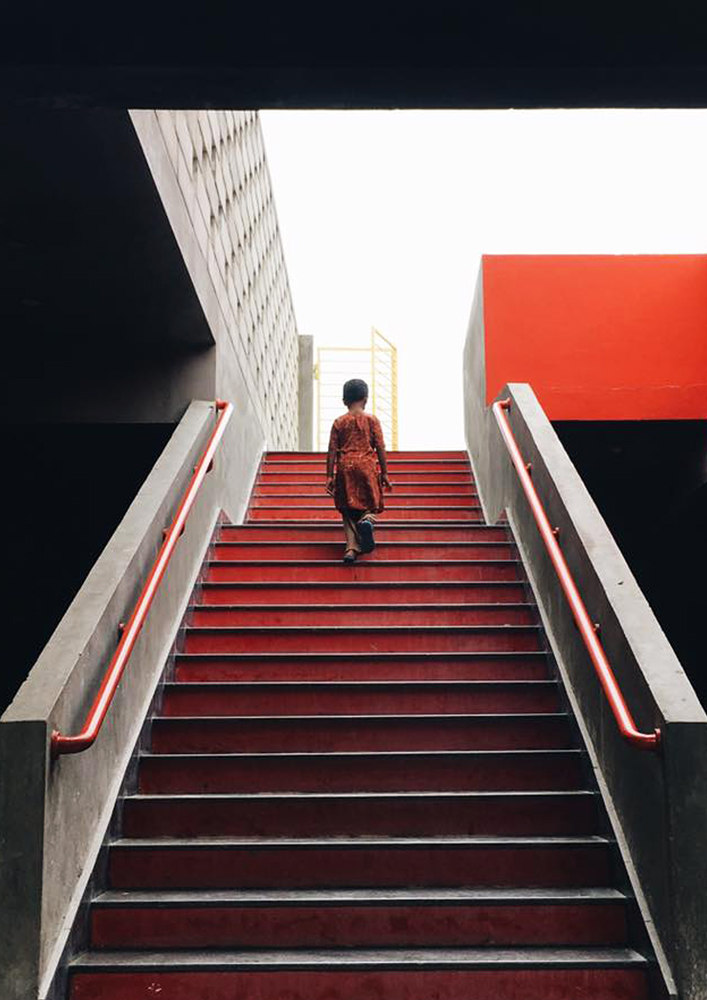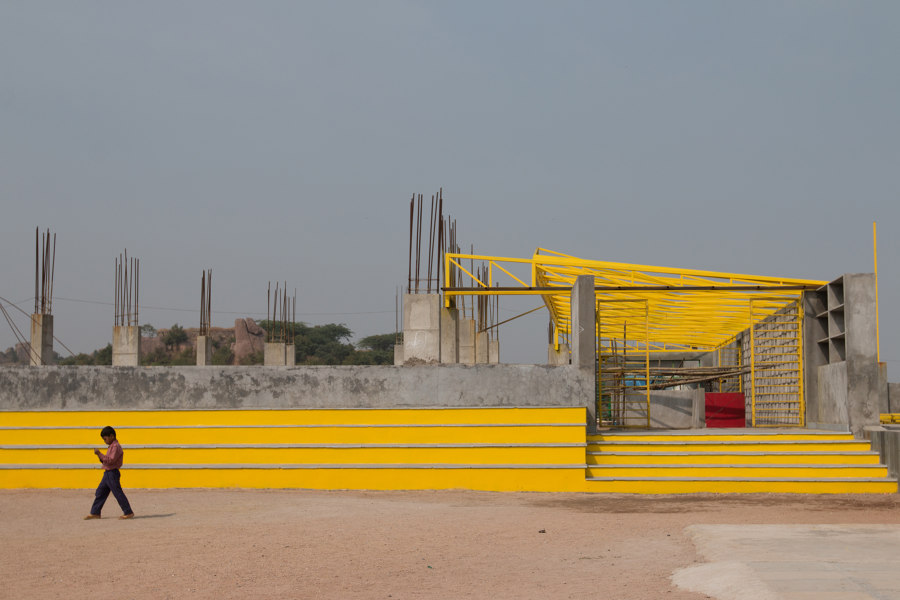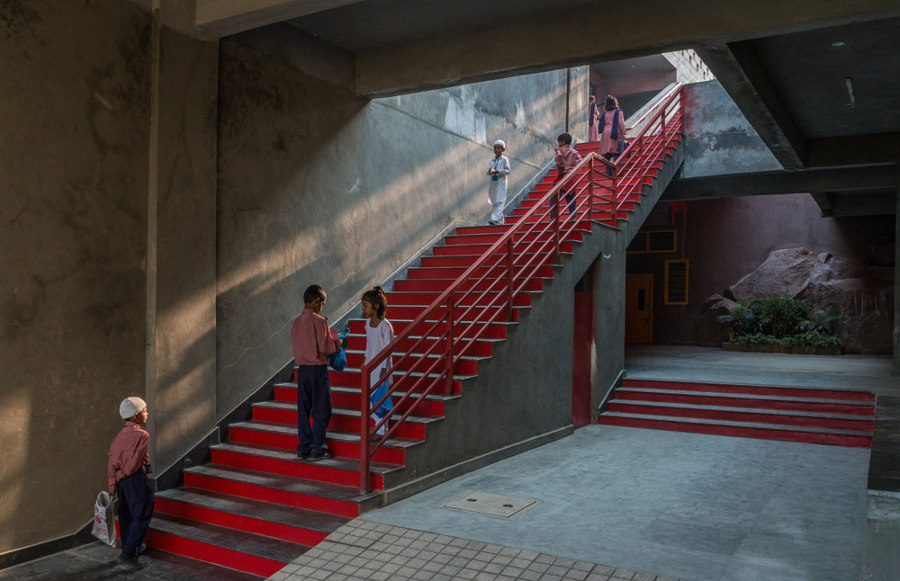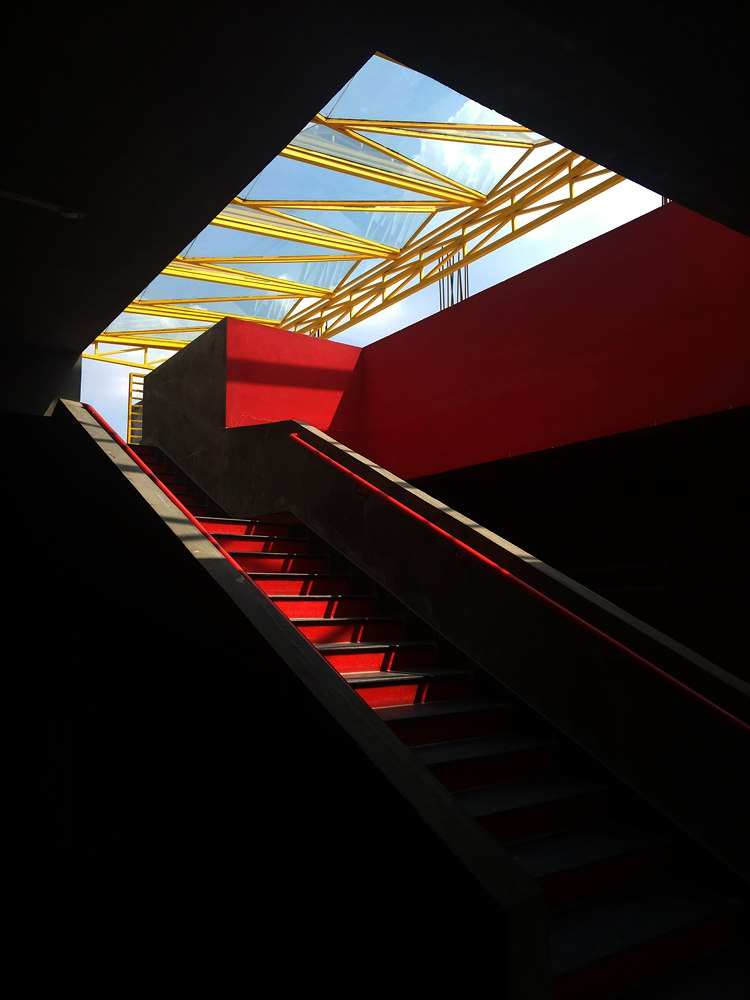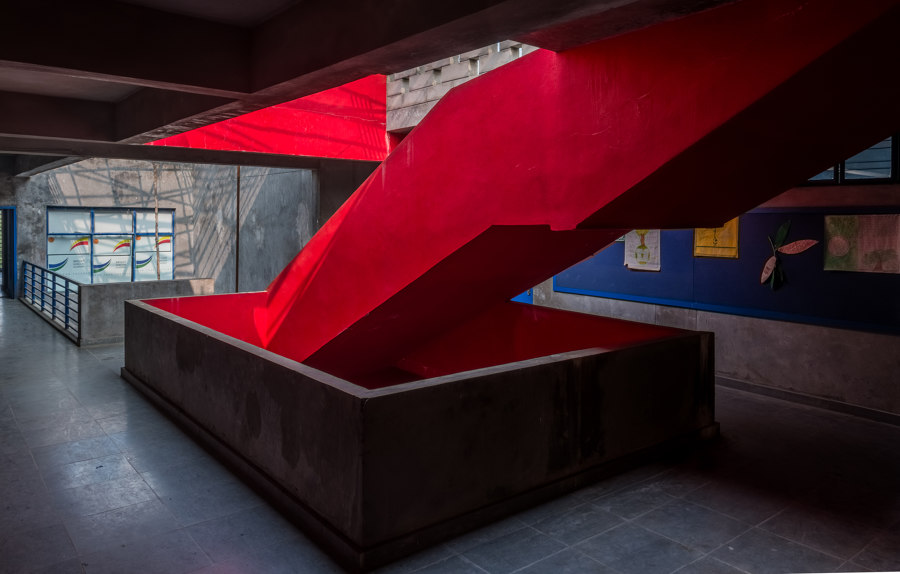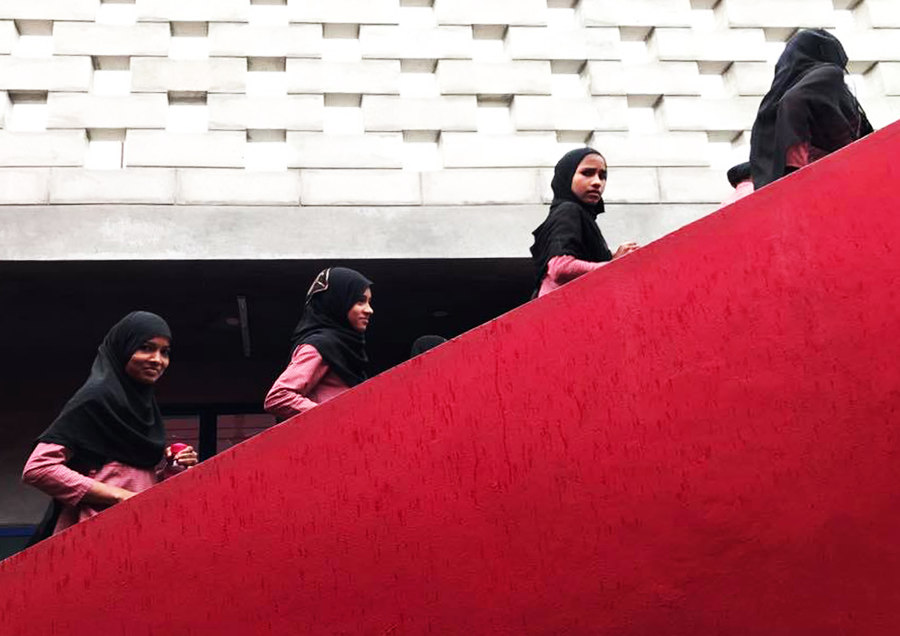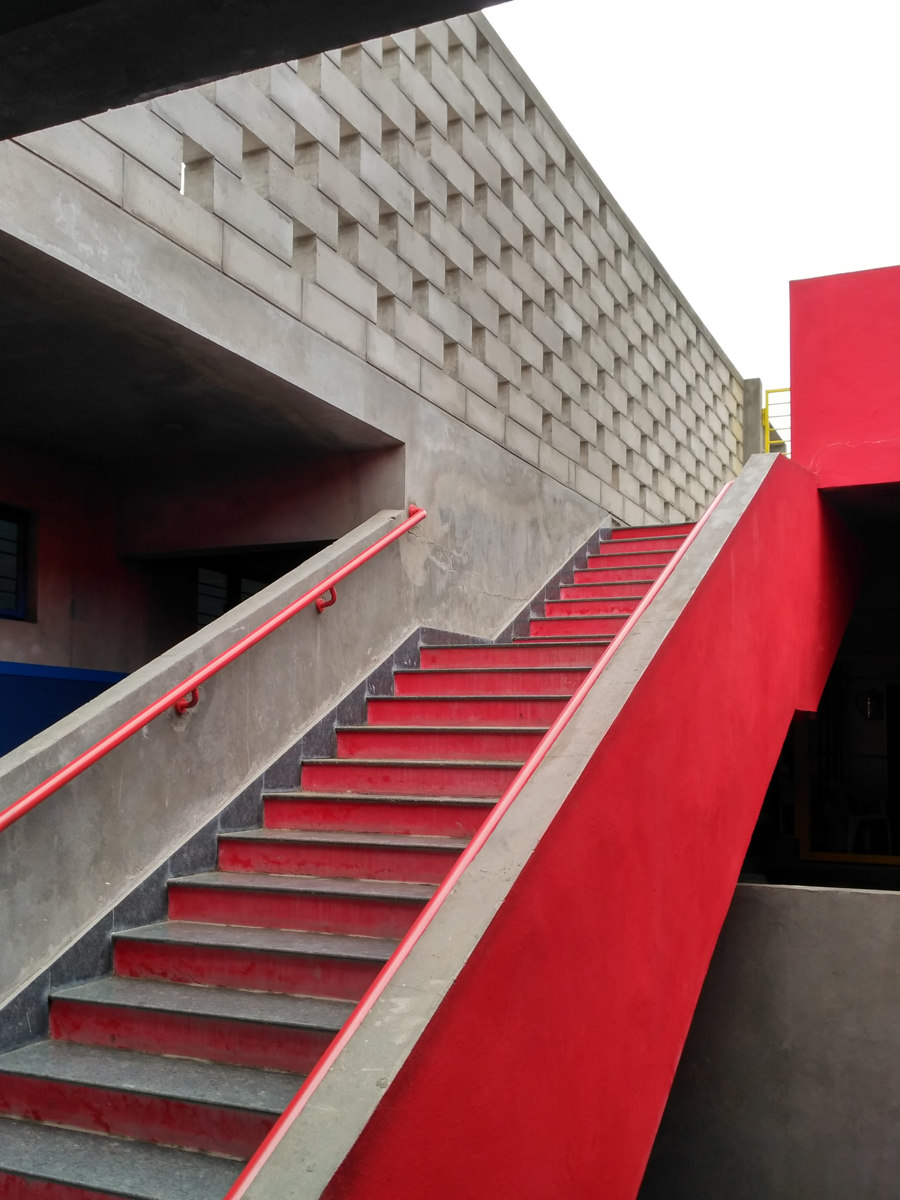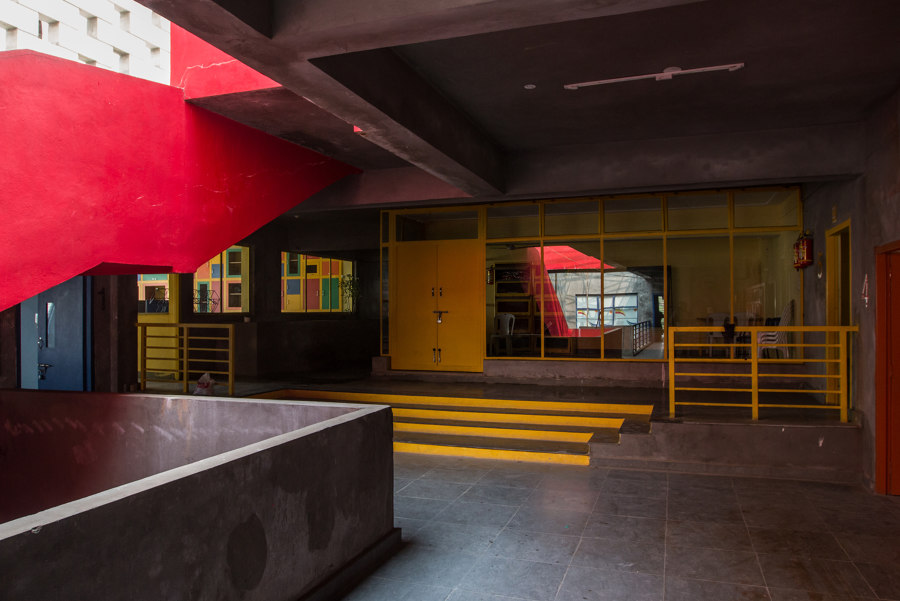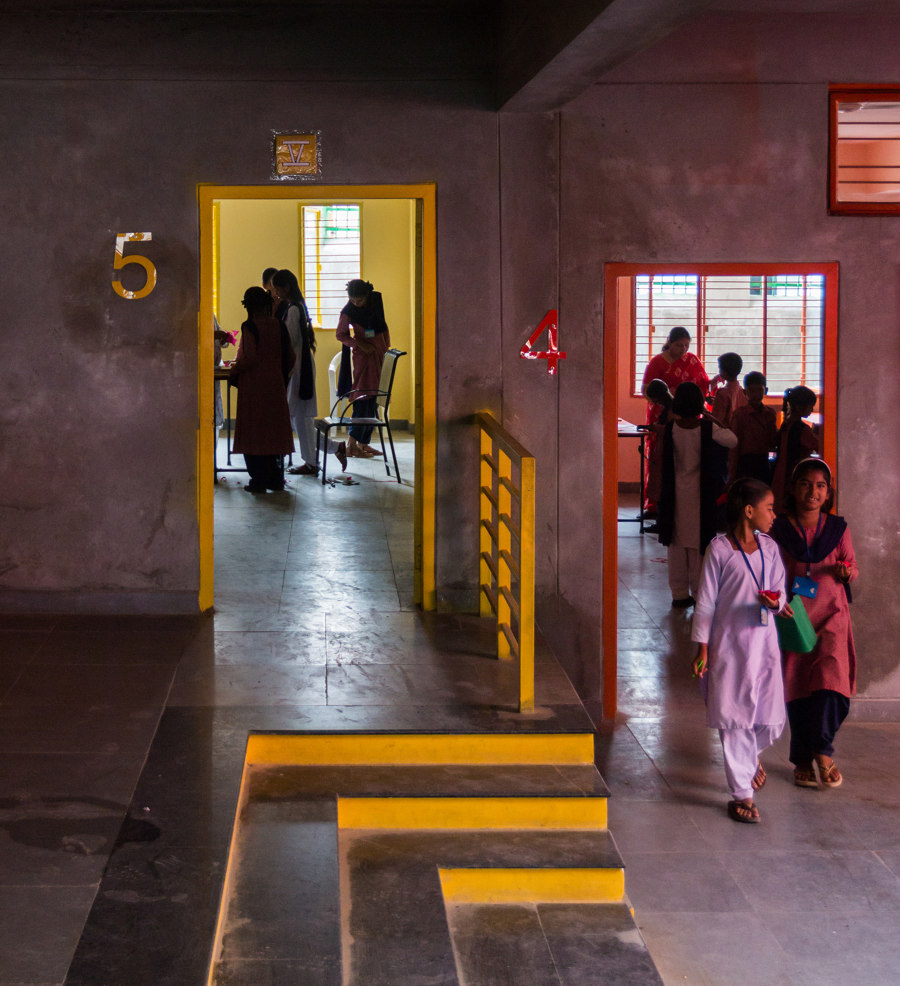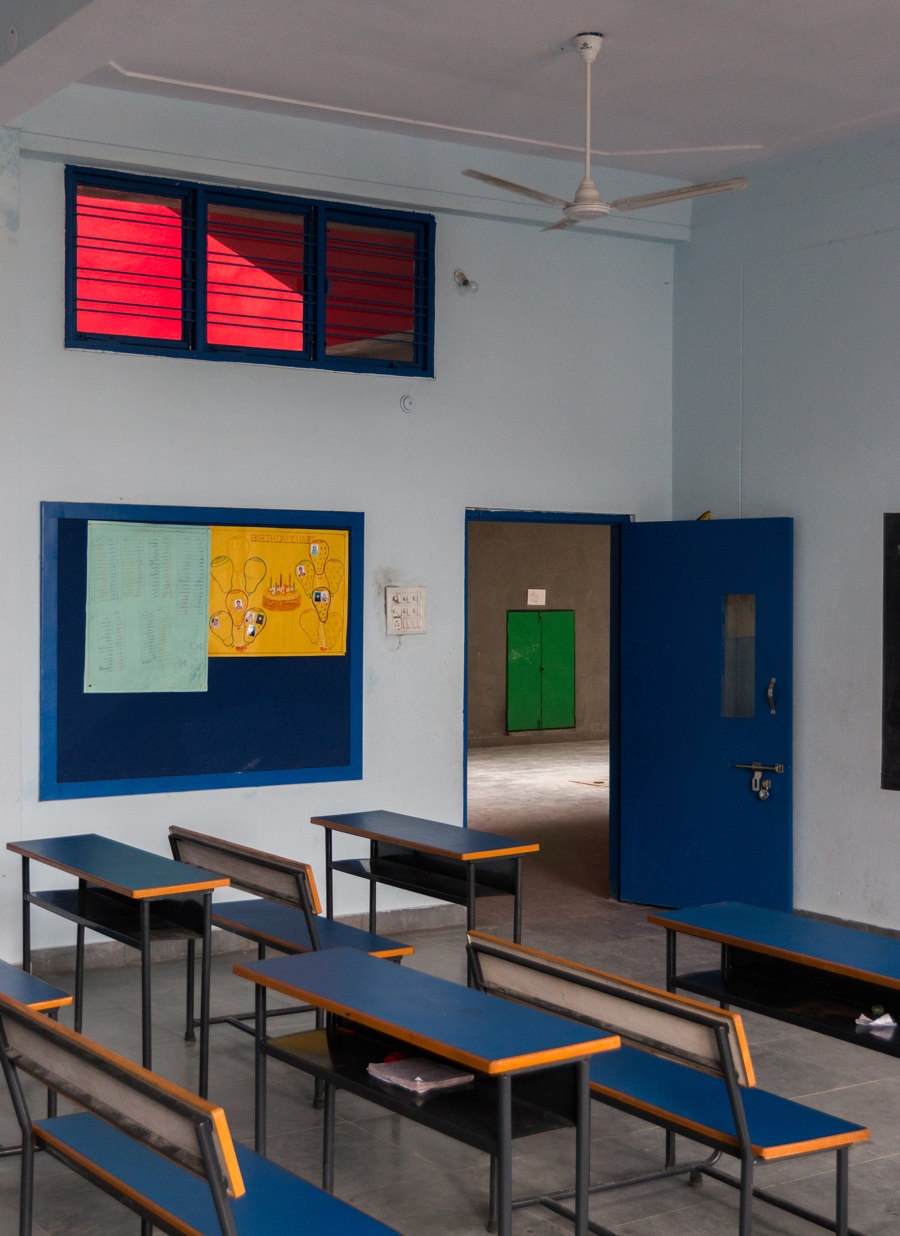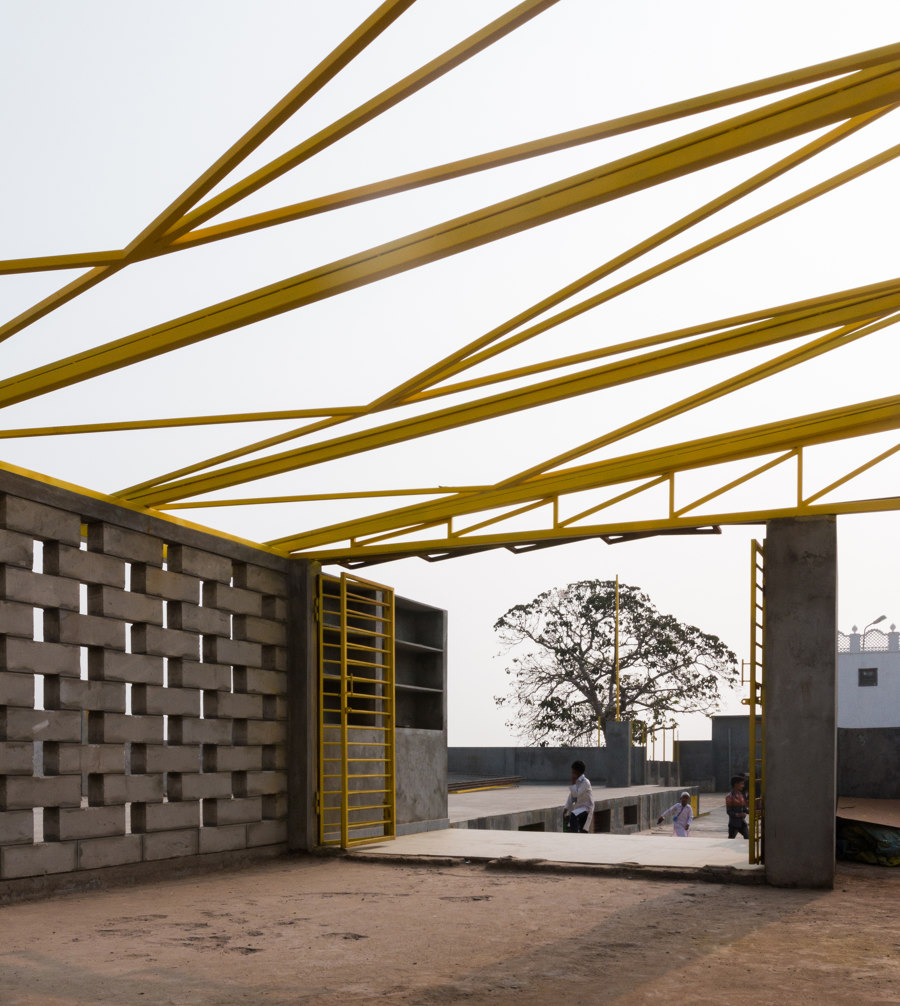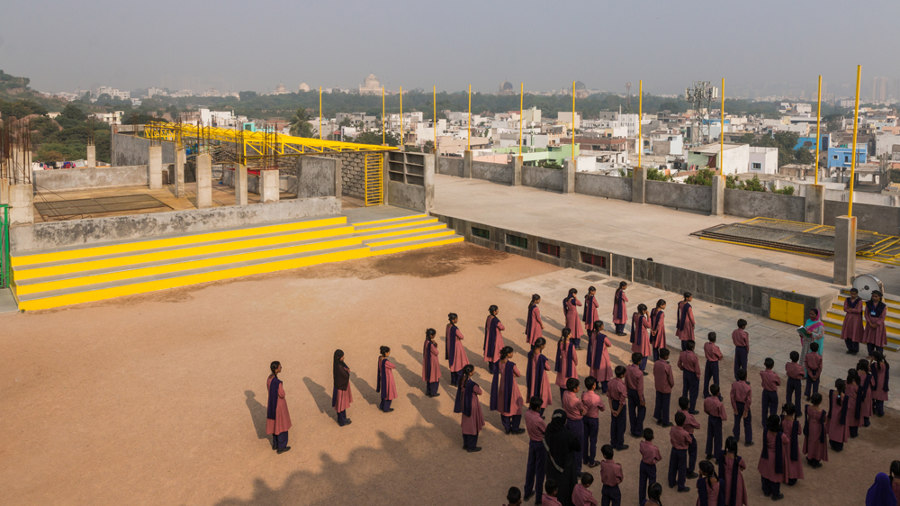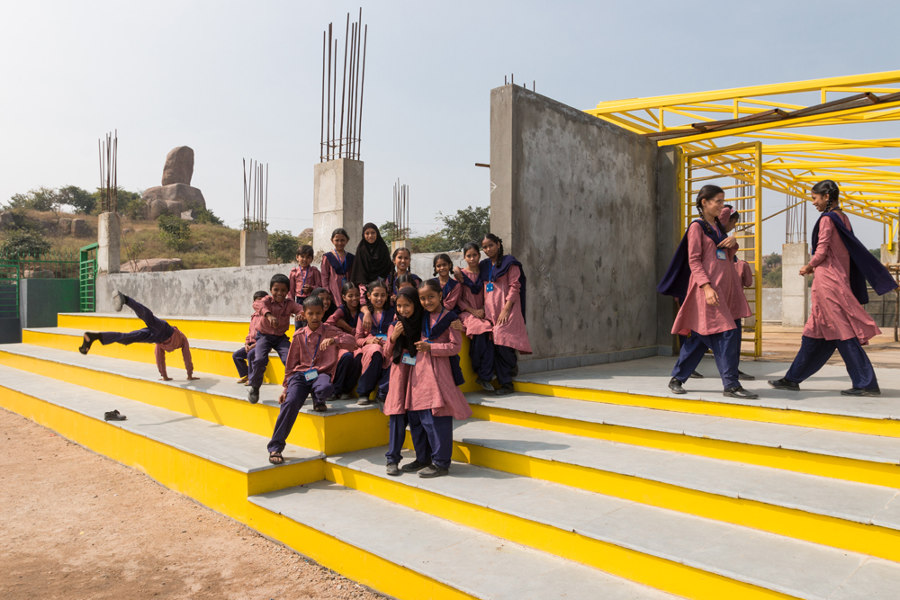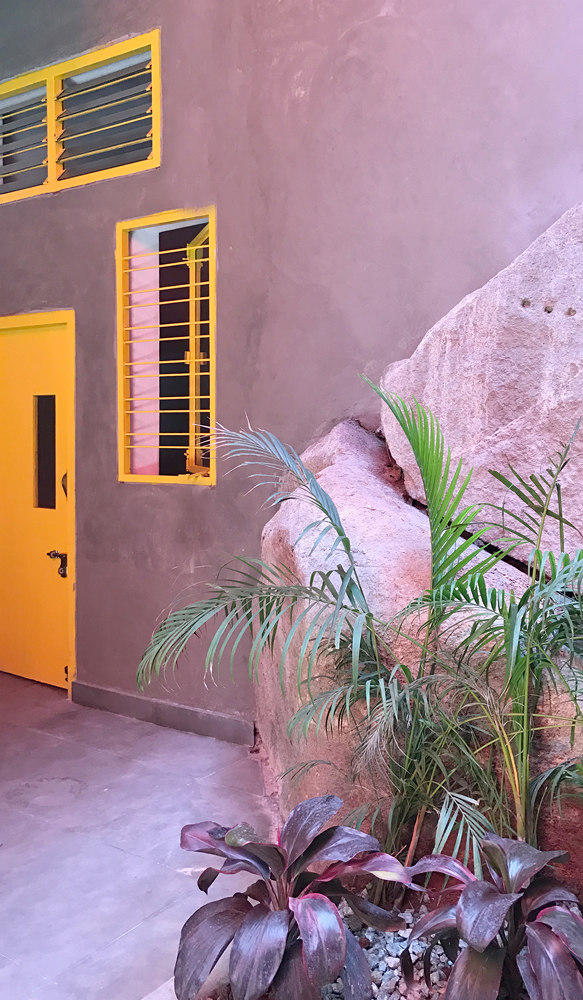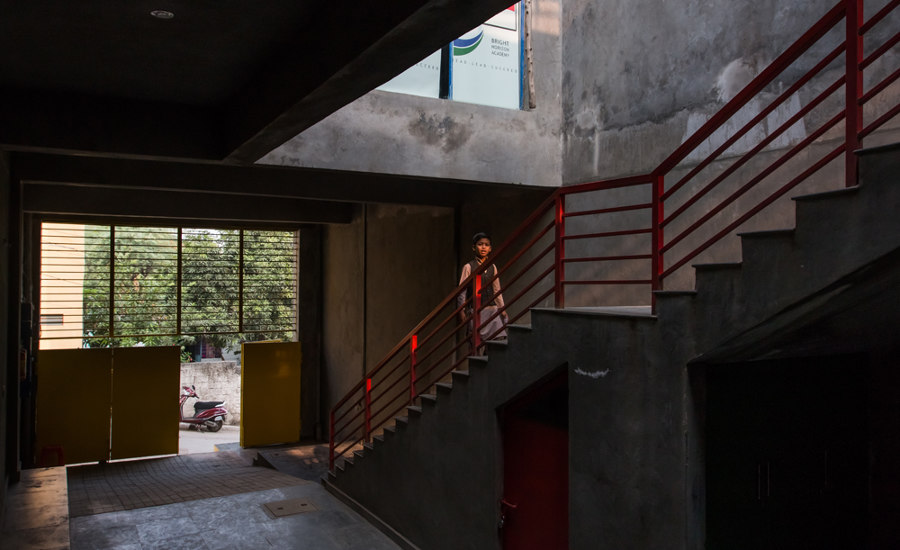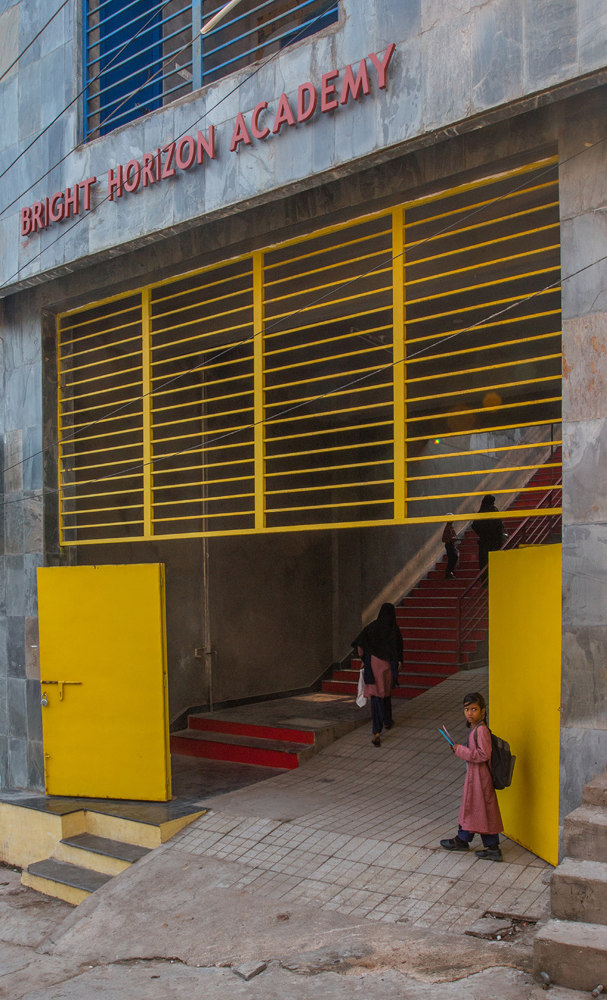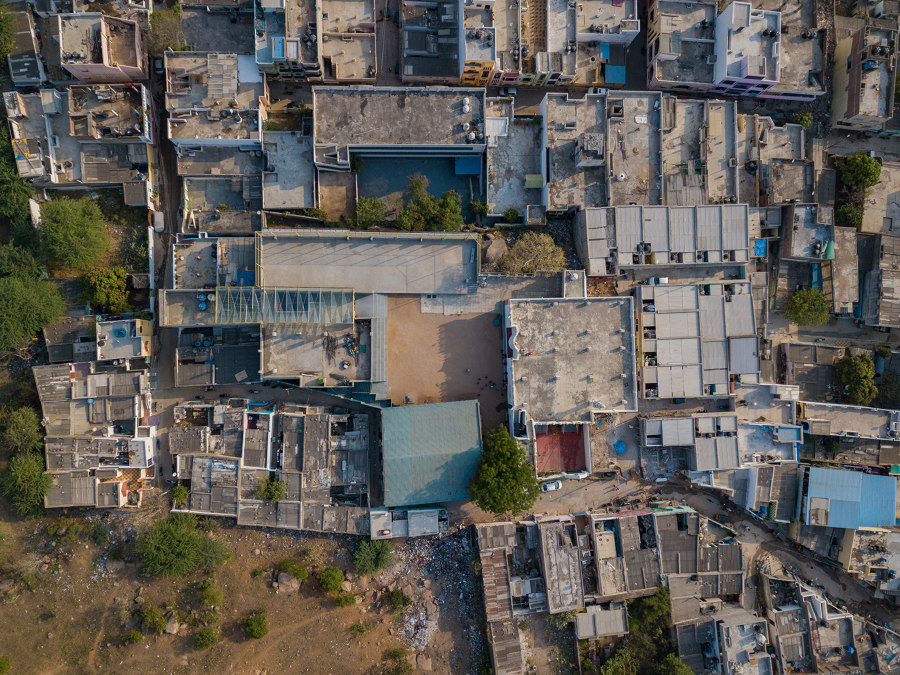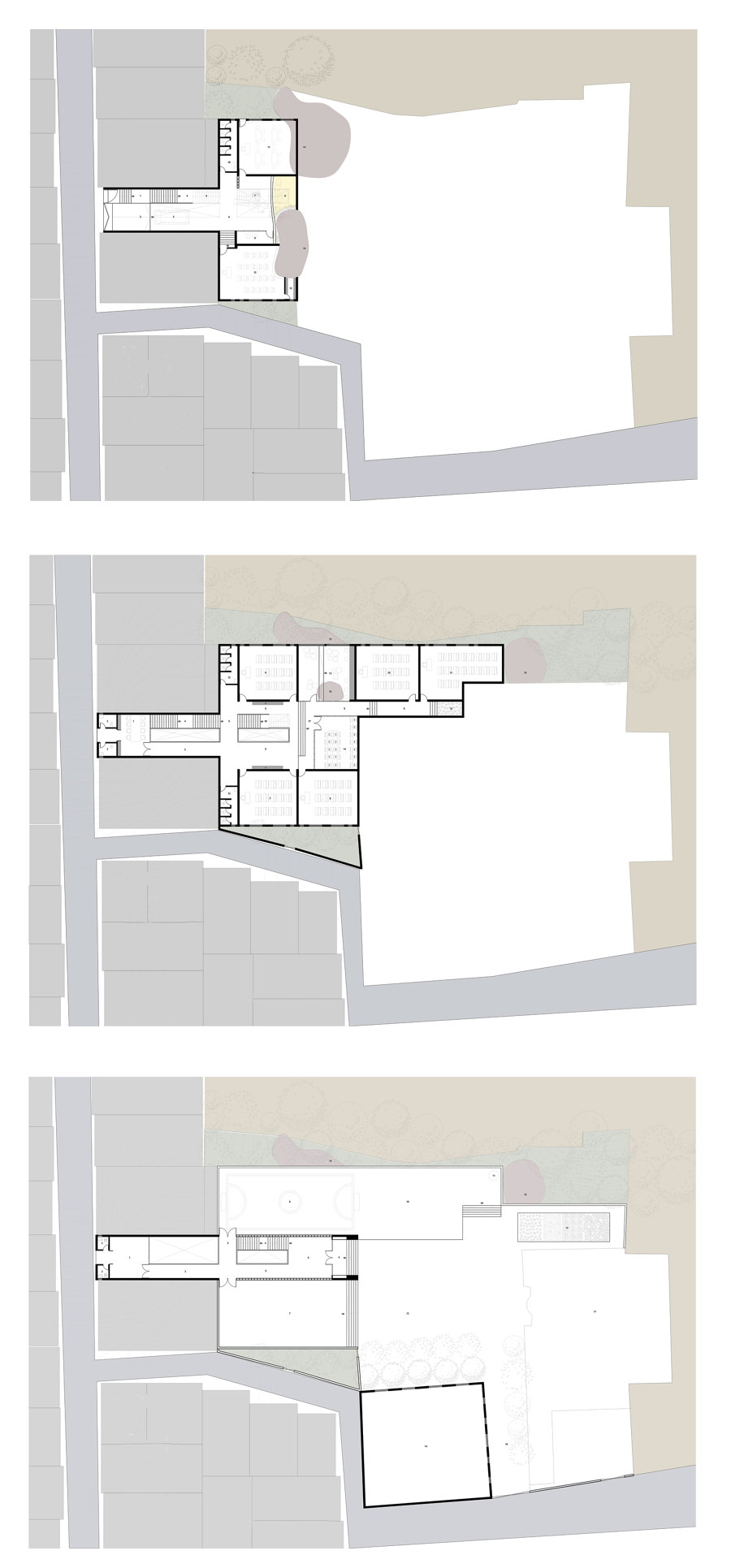A charity school had beenfunctioning out of a large makeshift shed for four yearsfinally raised enough funds for a building. The site is located on a hill top, in the unplanned settlement within the walls of the majestic Golconda fort in Hyderabad. The project was riddled with multiple challenges: a tight budget (as it is run by a non-profit educational trust), a highly contoured, rocky site (a topographic trait of the Deccan Plateau), a dense urban context, and Heritage Zone regulations.
The existing school was just a large hall with partitions for classrooms, and was a very dark, cramped and uninspiring space, not at all how school should be, but unfortunately, how charity schools generally are. We wanted to design bright and fun spaces, which would encourage learning and growth. We also aimed to preserve the openness of the playground by not building over it, which is a rare green lung space in the heart of the low-rise, high-density, unplanned neighborhood.
Articulating the peculiar and difficult topography of the site and its surrounds posed a major challenge due to proximity to heritage structures and dense urban context, most of which is residential. The 250 million-year-old natural rock heritage and the 800+ year old built heritage of the fort add to the beauty of the project. The site itself was sectioned into two parts by a wall of sheet rock, one part of the site lay 20’ above the other. The school is situated in such a way that it engulfs the rocks within it. Rocks were taken into the building, forming the walls of some classrooms and creating level differences and stepped seating on the floor of the library, which becomes an informal space, conducive to sharing and learning.
The surrounding context is colorful and kitschy, with walls of bright blue, pink and yellow. The building is left unfinished, with exposed concrete walls, that deliberately negate color in contrast to the neighboring houses. And yet, the color palette of the context is borrowed and reflected in the windows, doors and grilles. Reds, blues, yellows and greens create pops of color as accents in contrast with the gray of the concrete.The same colors reappear in subtle pastels in the classroom interiors. A bright red central staircaseforms a central spine of the building, all the way from the ground to the top floor, where the roofs of the school become a play courts connected to the existing playground.
While the building differentiates itself from the context in terms of colors, it respects the scale of the adjoining courtyard houses by creating a small entrance into the kindergarten, also in response to the scale of the younger students. Due to shared walls with surrounding courtyard houses, opportunities for ventilation were created in the form of light wells that run through the height of the structure, as an homage to the courtyard concept.Two skylights and voids bring in light and air, and expand the space vertically. A series of bridges lead from the wider section of the school to the narrow far end overlooking the road, where staff rooms and labs are located. This effectively divides the school into a large zone that students can freely access and a smaller restricted zone for teachers and supervised student access.
Each of the lowest and highest levels of the school has abutting streets.The varying levels allowed reduction in vertical circulation, by providing entrances from the street directly to the ground and first floors.The top level is left bare, enclosed only with permeable hollow block walls and trussed glass roof, and surrounded by different play areas. Older students can enter directly from this level, which has a more spacious scale. This bifurcation of entrances also allows division of the traffic entering the school, as well as segregation of students by age-group.
From its topmost level, the entire city is visible: the Golconda, the Qutb Shahi Tombs, the skyscrapers of Lanco Hills and the unchecked low-rise, high-density houses beneath.
The entire project was conceived, designed and constructed phase-wise (subject to fundraising) over four years.
Design team:
DesignAware
